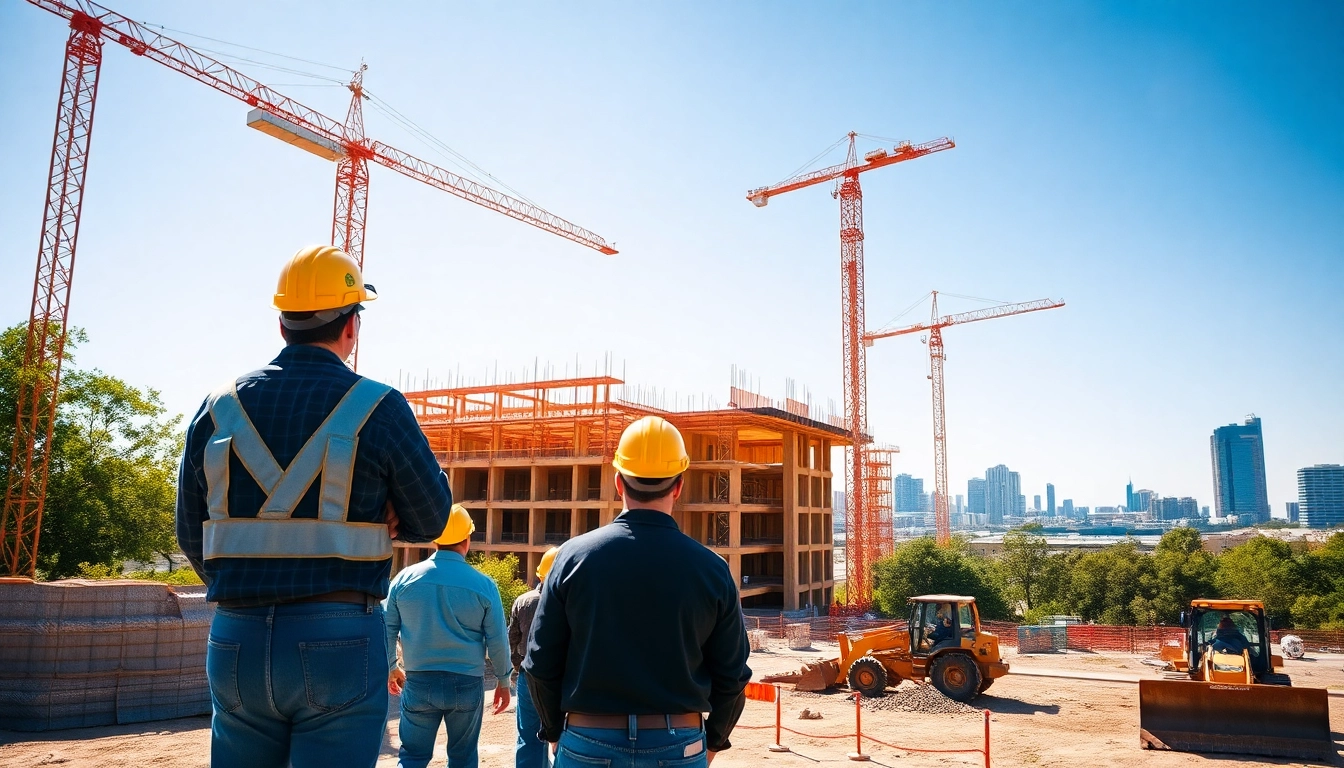Understanding Austin Construction: Market Overview
The construction industry in Austin, Texas, is dynamic and multifaceted, reflecting the rapid growth and development of the region. As a burgeoning hub for technology, culture, and innovation, Austin presents a unique landscape for construction professionals and businesses alike. Whether you’re looking to build a residential home, commercial facility, or industrial complex, understanding the intricacies of austin construction is vital for success.
Key Players in the Austin Construction Scene
Austin’s construction market is teeming with a range of participants, from small family-owned enterprises to large-scale corporations. Key players such as Austin Industries and The Austin Company dominate various sectors, including civil, commercial, and industrial construction. Companies like Austin Construction Inc., known for their family-oriented approach, emphasize local and community-centric projects, contributing to the city’s unique character.
Construction Types: Residential, Commercial, and Industrial
The Austin construction landscape consists of diverse project types, including:
- Residential Construction: Focused on single-family homes, townhouses, and apartments, catering to the growing population attracted to Austin’s quality of life.
- Commercial Construction: Encompasses office buildings, shopping centers, and hotels, critical for supporting Austin’s booming economy.
- Industrial Construction: Involves warehouses, manufacturing plants, and distribution centers, reflecting the increase in logistics and industrial operations in the region.
Growth Trends and Future Projections for Austin Construction
The Austin construction industry is projected to see substantial growth in the coming years. Factors contributing to this surge include:
- Population Growth: Austin is one of the fastest-growing cities in the U.S., creating a steady demand for housing.
- Technological Advancements: Innovations in construction technology, including prefabrication and sustainable building materials, are becoming increasingly common.
- Government Policies: Local government initiatives supporting infrastructure development are positioned to boost construction activities further.
Challenges Facing the Austin Construction Industry
Labor Shortages Impacting Construction Projects
A significant challenge facing the Austin construction industry is the ongoing labor shortage. With the rapid growth of construction demands, the skilled labor pool has struggled to keep pace. Construction companies are responding through:
- Enhanced Training Programs: Investing in workforce development initiatives to attract and retain skilled labor.
- Competitive Compensation: Offering competitive salaries and benefits to lure talent from neighboring regions.
- Collaboration with Trade Schools: Partnering with local educational institutions to provide practical training and apprenticeships.
Sustainability and Environmental Regulations
As environmental concerns mount, construction companies in Austin face strict regulations. To comply with local laws and community expectations, businesses are adopting sustainable practices, such as:
- Green Building Certifications: Pursuing LEED (Leadership in Energy and Environmental Design) certifications to demonstrate commitment to sustainable building.
- Renewable Energy Integration: Incorporating solar panels and energy-efficient systems into new builds.
- Eco-friendly Materials: Using sustainable materials that reduce environmental impact across the construction lifecycle.
Supply Chain Issues and Material Costs
Global supply chain disruptions have led to volatile material costs, further complicating construction projects. To mitigate these challenges, firms can implement strategies such as:
- Long-term Supplier Relationships: Establishing strong partnerships with suppliers to secure better pricing and availability.
- Alternative Materials: Exploring substitutes that meet project requirements without compromising quality.
- Increased Project Flexibility: Allowing for adjustments in timelines and budgets to adapt to material shortages.
Best Practices in Austin Construction Management
Adopting Technology for Improved Efficiency
Utilizing modern technology is essential for boosting efficiency in construction projects. Advancements such as Building Information Modeling (BIM), drones for site surveys, and project management software enhance collaboration and planning.
Ensuring Safety Standards on Construction Sites
Safety remains a top priority on construction sites. Companies should focus on cultivating a safety-first culture by implementing:
- Regular Training and Safety Drills: Keeping workers informed about safety protocols.
- Safety Equipment: Providing adequate personal protective equipment (PPE) to all employees.
- Site Audits: Conducting regular inspections to identify and mitigate potential hazards.
Effective Project Management Techniques
To deliver successful projects, construction firms in Austin should employ effective project management practices, such as:
- Clear Communication: Establishing open lines of communication among stakeholders to foster transparency.
- Timeline and Budget Management: Utilizing project management software to monitor progress and expenses closely.
- Adaptive Planning: Being prepared to adjust plans based on unforeseen factors, such as weather delays or material shortages.
Innovative Design and Architecture in Austin
Trends in Modern Urban Architecture
Austin is known for its unique architectural style, blending historic elements with modern design. Current trends include:
- Adaptive Reuse: Transforming old buildings into modern spaces while preserving structural integrity.
- Mixed-use Developments: Creating spaces that combine work, live, and play environments to enhance community living.
- Innovative Use of Space: Designing flexible spaces that can adapt to various functions over time.
Green Building Practices in Austin Construction
As sustainability becomes a priority, architects and builders in Austin are incorporating green building practices, including:
- Energy-efficient Designs: Focused on natural light and ventilation, optimizing energy usage.
- Water Conservation Measures: Utilizing rainwater harvesting and drought-resistant landscaping.
- Sustainable Sourcing: Selecting local materials to reduce the carbon footprint associated with transportation.
Case Studies of Iconic Projects in the City
Several notable projects exemplify Austin’s approach to construction and design:
- The Dell Medical School: A world-class facility that emphasizes collaboration with community healthcare initiatives.
- The Domain: A mixed-use development that integrates residential, retail, and office spaces seamlessly within the urban fabric.
- Green Building Projects: The Bullocks Center is a prime example of integrating commercial spaces with green technologies.
Future Prospects for Austin Construction Businesses
Emerging Opportunities in the Market
The future of the Austin construction industry looks promising, rooted in emerging trends such as:
- Smart Cities Initiatives: Embracing technology to enhance infrastructure and urban living.
- Affordable Housing Projects: Addressing the increasing demand for housing within urban settings.
- Health-focused Spaces: Designing buildings that promote well-being and public health.
The Role of Government Policies and Incentives
Austin’s government is actively fostering growth in construction through various policies and incentives, such as:
- Tax Breaks for Developers: Offering financial incentives to spur development in targeted areas.
- Streamlined Permitting Processes: Reducing bureaucratic delays to expedite project timelines.
- Infrastructure Investments: Enhancing city infrastructure to support new construction projects and improve overall quality of life.
Building a Sustainable Future in Austin’s Construction Sector
The commitment to building sustainably will shape the future of Austin’s construction sector. Additionally, by adopting innovative approaches and integrating environmentally friendly practices, construction firms can not only thrive but also contribute positively to the community and environment.



